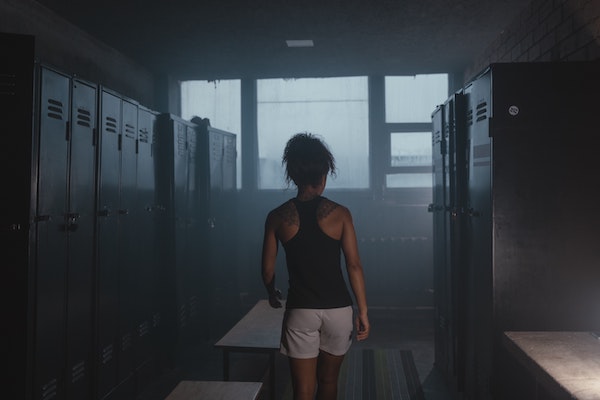Lockers have been an essential part of the school experience for decades. For many of us, getting our locker combination was our first exposure to middle school along with choosing your own classes and sadly losing recess. For months, beginner locker users will struggle to open the dang thing; only to have it mastered by winter break by which time most students can open their locker blindfolded. Yet many of these traditional locker experiences have petered out in recent years: Covid, school shootings (huge sigh), and a trend away from textbooks have altered the locker landscape. To get a read on the current situation with school and lockers, American Teen did some research and chatted with some students and teachers to see how they feel about this somewhat antiquated storage system.
By Señor K
In Case You Didn't Know...
For those who don’t know, locks on school lockers come require 3-digits to open. Let’s say your locker combination is 7-21-24. (Your school will probably provide you with a card that lists your locker combination).
At the top of the lock itself is a pointer shape. You literally spin the wheel on your lock to the number combination, so 7-21-24, or whatever, and need to figure out if it spins left to right, and back, or right to left, and back. It takes a little bit of work to figure out the perfect spin.
When you get to each number on your combination, you let the number ‘rest’ at the pointer sign on top of the lock for about 5 seconds before spinning to the next number in the combination. Then you pull and/or lift the lock, it opens, and your locker is accessible. Once you get the hang of it, it’s easy. Then you close the locker and it locks automatically, or you close the clock manually to shut it.
 Locker Lore
Locker Lore
2,500 years ago in ancient Greece, athletes would train at the Gymnasium and store their garments in guarded cubbies. Even with a guard however, theft became such a problem that one Greek ruler imposed the death penalty on anyone caught stealing. Fast forward to 1857 when the Yale company invented the padlock. Soon, the padlock met the cubby and together they formed the modern locker: a closed, lockable narrow storage compartment which began being mass produced by several companies in the 1920s.
By the 1970s and 80s lockers had become a ubiquitous feature of the school landscape. Not only was it a handy place to store all those heavy textbooks, but lockers were also a private space to decorate with posters, wrapping paper, mirrors, and little plastic pencil cups. Students took pride in their locker decorating skills. Lockers also started appearing in multiple venues such as the band room, and, of course, the locker room in gym class. There were so many lockers in schools that students often mixed up the many combinations they had to memorize. Nonetheless, they were everywhere so schools must have bought into the concept for a reason…
The Good
Lockers have a lot of upsides. Students get a place to store backpacks and skateboards and books and all the other necessities of a school day. They also get to practice some organizational skills by ideally keeping their lockers neat, with materials easy to find. Some students we interviewed liked both having their own space to decorate and having a social gathering spot where the latest gossip can be exchanged between classes.
Teachers also like lockers because, as one middle school teacher told us, ‘they keep backpacks out of the classroom.’ Twenty to thirty backpacks strewn across a classroom creates clutter and walking around can be treacherous for a teacher trying to move about to help their students. Not to mention, students themselves can trip over them—they can be a safety hazard.
Backpacks can also be a distraction with phones going off from inside the pack and they make it too easy for students to bring lots of extra stuff to class like phone chargers, snacks, gum, tech decks, and other fidgets.
If all that stuff is packed in the locker, students theoretically, come to class with just their notebook and pen. The problem is the, ‘theoretically’…
The Bad
From our interviews with teachers and students it seems that a lot of these “theoretical ideas” didn’t work out. For the most part, kids don’t like storing their stuff in their locker. They prefer bringing their backpacks to class where they have everything with them. In fact, several kids we interviewed were even offered a locker by the school, and instead chose to use their backpacks instead.
One student, a ninth grader from Colorado, told us how he only uses his locker to store his skateboard. One factor may be the disappearance of heavy textbooks which, at the beginning of the year, used to get handed out in every class. These books would be both lugged to class and brought home for nightly reading assignments. And they were indeed thick and heavy, especially science books!
Today, educators don’t use hardcover textbooks nearly as much, so consequently, there is no need to store them. These days, students use Chromebooks and digital versions of textbooks instead. In fact, not one student we interviewed uses their locker on a regular basis. A few high school students mentioned that they used their lockers freshman year, but as soon as they became upperclassmen, they moved to the backpack model/approach.
 Looking forward
Looking forward
Much of how students respond to the locker/backpack debate is dictated by the school’s policy. Some schools have banned backpacks and only allow lockers, while others do the opposite. As we have seen here, there are arguments for both sides
--but lately, most schools have been leaning toward the backpack model.
A great illustration of why this is happening was explained to us by an eighth-grade English teacher. She said: “I was originally against backpacks in the class because they created so much mess; but our principal created a hard ban on all lockers. I was originally against this policy because like I said, I don’t like clutter in the classroom, but his arguments were that eliminating lockers would help limit tardies and festering in the hallways. And kids always ask to leave class to go to the bathroom, which often includes a stop at the locker to check on their phones.”
It turns out after a few weeks of testing out this new policy, the principal was correct--kids were tardy a lot less and they quit asking to use the bathroom now that they couldn’t stop at their lockers to check the phone. “So, while initially I was against this policy of lockers being banned, I have now come around to the other side and agree with our principal. Banning lockers does indeed help decrease tardiness and almost eliminates students asking to leave class to ‘go to the bathroom.’”
So long, lockers
In the long run, based on what we’ve seen from both students and teachers, lockers seem to be losing their luster. Most students don’t use them anymore even when they are offered, and teachers seem to appreciate the fact that with a backpack kids have everything they need right there in class; no more running back to their locker to grab their calculator or notebook. It’s kind of sad because getting a locker used to be a pretty cool part of being an official middle school student. Getting your first locker was a right of teenage passage. It was like a private little garage that you got to make your own, a space that no one else had access to, guarded by your own private three-digit combination.
Regardless, today’s teens don’t feel such nostalgia for the idea of walking back to some metal storage bin every 50 minutes to grab some new set of materials. Maybe the idea of a locker simply doesn’t mesh with modern kids; they want everything right here, right now, at their fingertips, super easy, and super convenient. If they use a locker it's mainly for storing large, oversize items, like skateboards, lacrosse gear, art portfolios, a puffy winter coat, and golf clubs. Otherwise, they sit empty and take up space.
